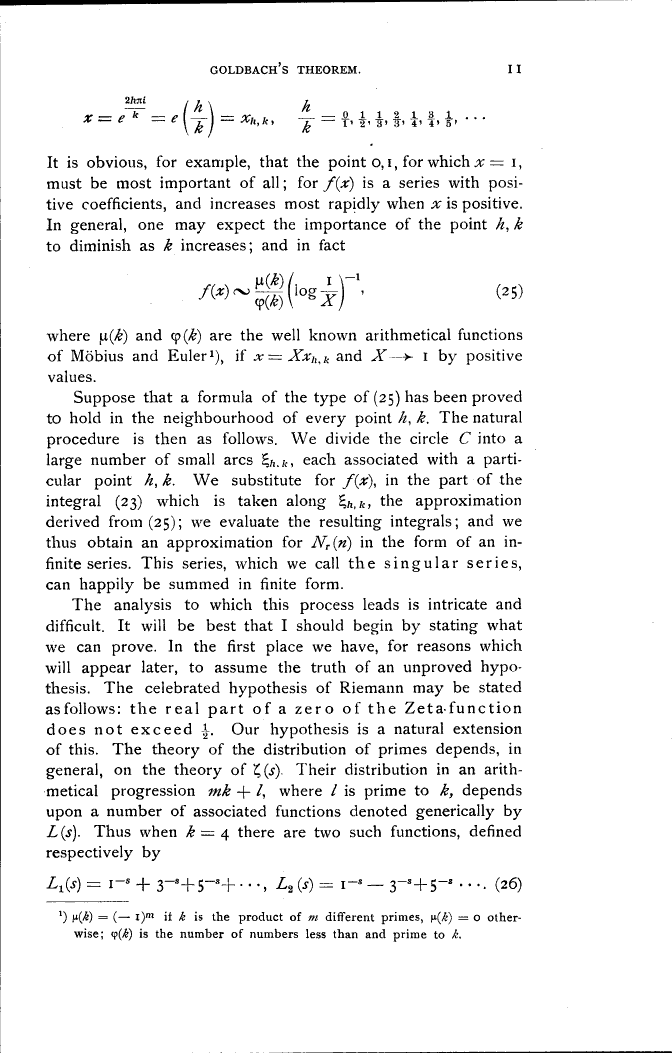
Full resolution (TIFF) - On this page / på denna sida - Sidor ...

<< prev. page << föreg. sida << >> nästa sida >> next page >>
Below is the raw OCR text
from the above scanned image.
Do you see an error? Proofread the page now!
Här nedan syns maskintolkade texten från faksimilbilden ovan.
Ser du något fel? Korrekturläs sidan nu!
This page has never been proofread. / Denna sida har aldrig korrekturlästs.
GOLDBACH S THEOREM. I I
It is obvious, for example, that the point ö, i, for which x = i,
must be most important of all ; for f(x) is a series with
positive coefficients, and increases most rapidly when x is positive.
In general, one may expect the importance of the point h, k
to diminish as k increases; and in fact
where \i(k) and cp(/&) are the well known arithmetical functions
of Möbius and Euler1), if x^=Xxh^ and X - >- i by positive
values.
Suppose that a formula of the type of (25) has been proved
to hold in the neighbourhood of every point h, k. The natural
procedure is then as follows. We divide the circle C into a
large number of small arcs £/i./c, each associated with a
particular point h,k. We substitute for f(x\ in the part of the
integral (23) which is taken along £ft|A, the approximation
derived from (25); we evaluate the resulting integrals; and we
thus obtain an approximation for NT(n) in the form of an
infinite series. This series, which we call the singular series,
can happily be summed in finite form.
The analysis to which this process leads is intricate and
difficult. It will be best that I should begin by stating what
wre can prove. In the first place we have, for reasons which
will appear later, to assume the truth of an unproved
hypothesis. The celebrated hypothesis of Riemann may be stated
asfollows: the real part of a zero of the Zeta- function
does not exceed \. Our hypothesis is a natural extension
of this. The theory of the distribution of primes depends, in
general, on the theory of £(V). Their distribution in an
arithmetical progression mk + /, where / is prime to k, depends
upon a number of associated functions denoted generically by
L(s). Thus when £ = 4 there are two such functions, defined
respectively by
L,(s) = i- + 3-s+5-s+ ..., L,(s) = i- - 3-s+5~* . . .. (26)
l) \i(k} = (- i)m if k is the product of m different primes, \i(k) - ö
otherwise; 9(£) is the number of numbers less than and prime to k.
<< prev. page << föreg. sida << >> nästa sida >> next page >>